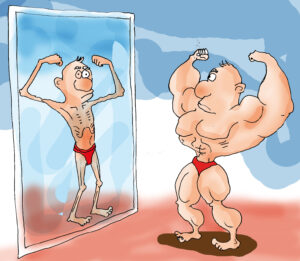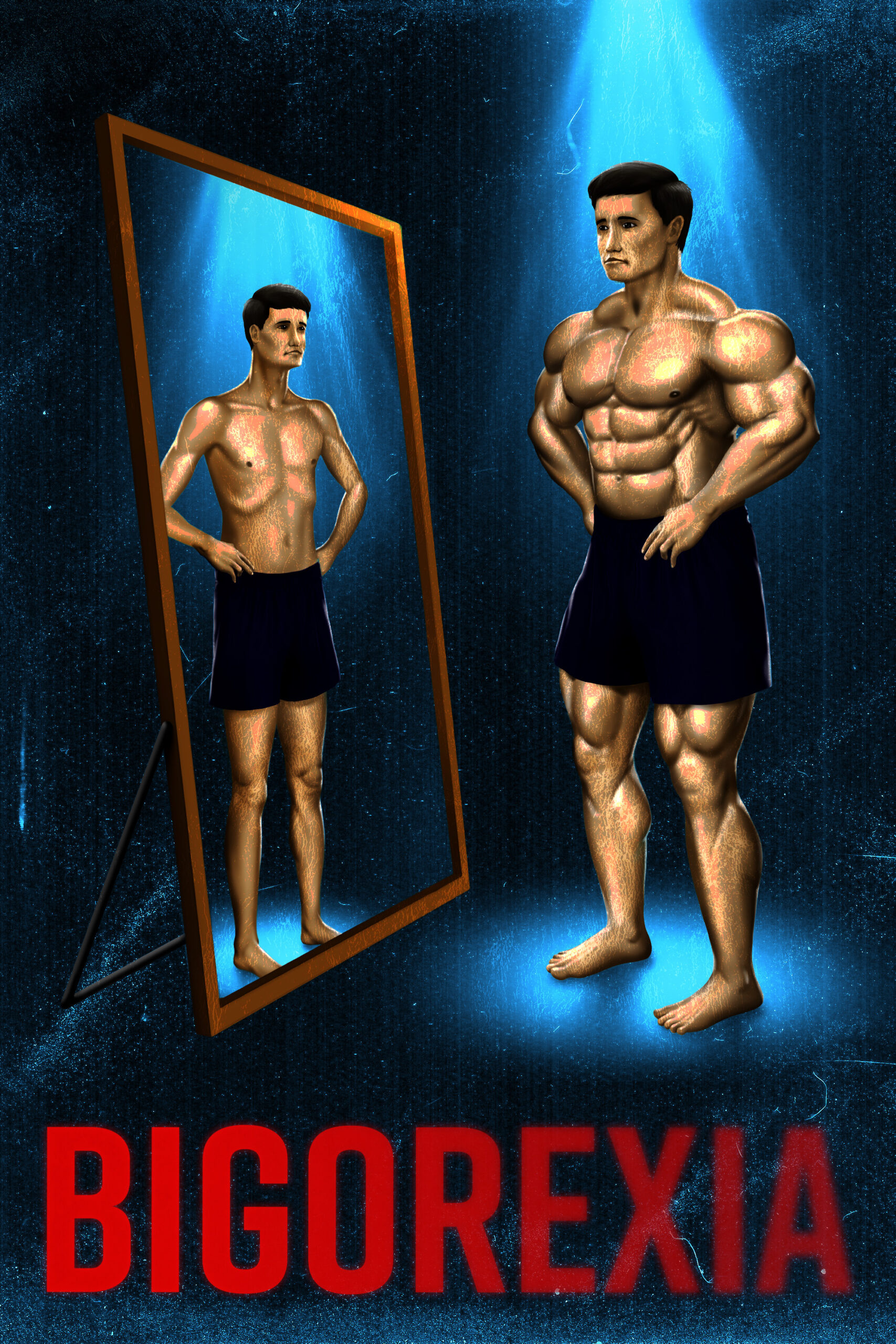Muscle dysmorphia, often referred to as bigorexia, is characterized by an individual’s obsession over his or her body being too small or underdeveloped and the subsequent drastic measures taken to increase muscle mass. This affects both men and women, though men are more likely to struggle with bigorexia. Muscle dysmorphia is a subset of body dysmorphic disorder (BDD), which is closely linked to other eating disorders.
How Does It Develop?
Just as dieting behaviors can snowball into an eating disorder, an obsession with the gym and weight-lifting can lead to bigorexia when combined with low self-esteem, a distorted self-image, and/or other underlying mental health conditions. The Alliance for Eating Disorders Awareness reports that as many as 10 percent of males who are “obsessive gym-goers” struggle with muscle dysmorphia.
As a 2005 scholarly article on the emergence of bigorexia explains, “Pressure on males to appear more muscular and lean has prompted a trend in the area of psych behavioral disorders often likened to anorexia and bulimia nervosa. Athletes are particularly susceptible to developing body image disorders because of the pressures surrounding sport performance and societal trends promoting muscularity and leanness.”
Bigorexia is closely linked to obsessive-compulsive disorder (OCD), as an individual’s obsession with weight-lifting and whey protein shakes can fuel disordered thoughts and increase behaviors. As with any eating disorder, this becomes a vicious cycle.

What Are the Warning Signs?
Not everyone who loves working out or lifts weights regularly struggles with bigorexia. How can you tell the difference between healthy exercise patterns and disordered behaviors?
individuals who are active in their bigorexia typically prioritize muscle-building behaviors and activities above work, school, and relationships. They might pass on dinner with friends because they have to eat their previously prepared high-protein and low-fat meal at a specific time, or because they need to go to the gym to fit in their second workout of the day.
Other warning signs can include never being satisfied with current muscle mass, consuming an excessive amount of supplements and muscle-building products, steroid and/or substance abuse, compulsively comparing body and muscle size to that of others, and obsession over other body parts and self-perceived flaws.
Why More Research is Needed
Bigorexia is under-researched and under-diagnosed. Many people still believe that men cannot struggle with eating disorders or body image issues, which is simply untrue. Women can also have muscle dysmorphia, and the disorder often co-occurs with depression and other mental health conditions.
There is very little research on bigorexia and eating disorders among bodybuilders. The Body Dysmorphic Disorder Foundation notes that muscle dysmorphia is most common among homosexual males, a population that is often neglected in the context of eating disorder research in general.
For an individual’s obsession with weight-lifting and muscle mass to be diagnosed as bigorexia, it needs to cause a great deal of distress and affect his or her daily life. Those struggling with the muscle dysmorphia deserve increased public awareness on the condition and resources to support their recovery.





Wow, amazing blog format! How long have you been running a blog for? you made running a blog look easy. The full glance of your site is great, let alone the content material!!